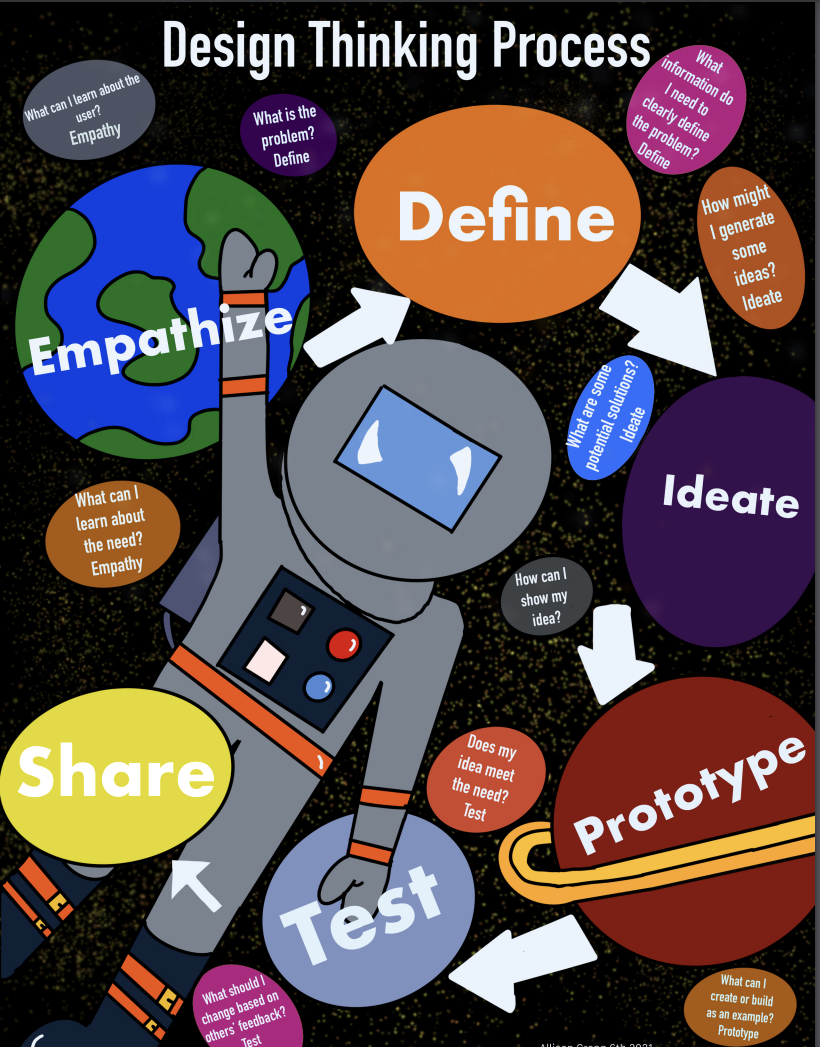Design Thinking

Why do we use a common design thinking process in all of our classes?
The Design Thinking process is a cyclical, human-centered approach to problem solving that encourages students to develop a deep understanding of how individuals experience a given problem in order to arrive at effective solutions. The process helps students build an awareness of the wide variety of ways in which others experience the world and how factors like culture, geography, physical ability, resource availability, and many others can impact the efficacy of a given solution. Throughout the process, students continually build and strengthen the critical skills necessary to meet future challenges in the global workforce and their communities.
Common Practices for Design Thinking at NEAAAT
Design Powerful Learning Experiences
- Understand and breakdown the process as it relates to the specific content area Describe for students how the process relates to the problem within the PLEP
- Design activities that meet the Design Thinking learning mastery standards
- Incorporate business and community partners
- Incorporate student voice and choice in the process
Deliver Powerful Learning Experiences
- Facilitate and ask probing questions throughout the process
- Encourage students to fail forward
- Provide feedback using the Design Thinking Rubric
Discover the Impact of Powerful Learning Experiences
- Reflect on the practices used to coach students through the process and their effectiveness
- Facilitate student reflection on each phase of the Design Thinking Process
- Reflect on overall feedback from peers, coaches and community
- Identify specific change ideas for continuous improvement